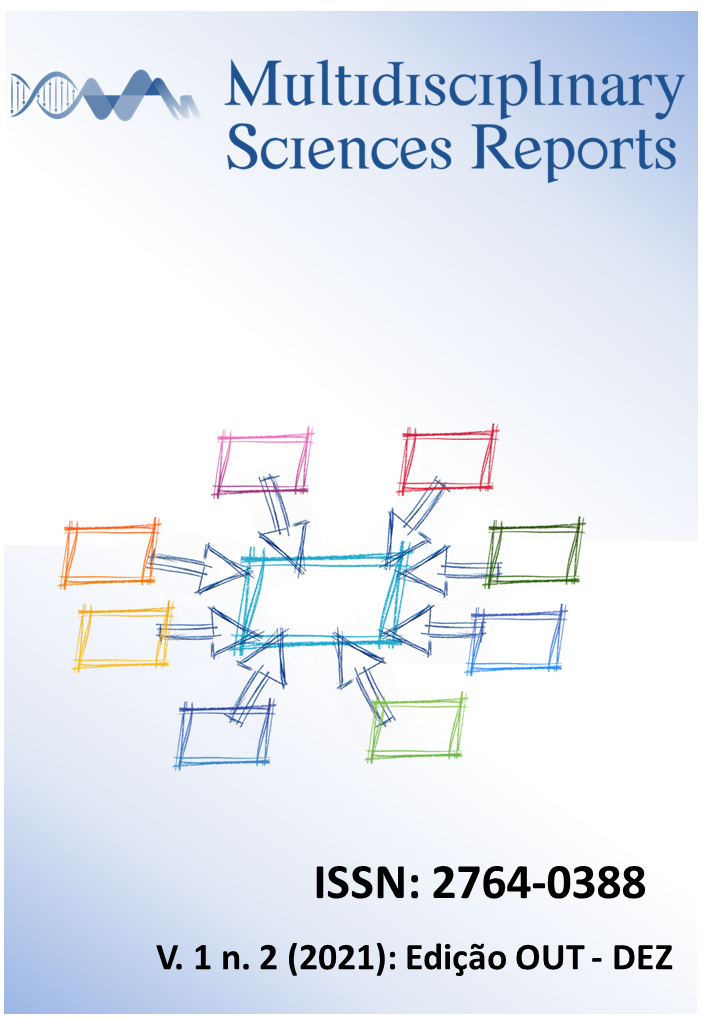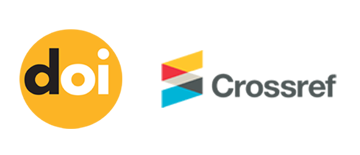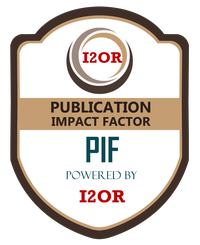INTERPRETAÇÃO DAS LESÕES E AVALIAÇÃO DAS CAUSAS DE MORTE EM MAMÍFEROS RECEBIDOS NO CETAS / IBAMA NO RIO BRANCO, ACRE, BRASIL:
ESTUDO OBSERVACIONAL
Visualizações: 453DOI:
https://doi.org/10.54038/ms.v1i2.16Palavras-chave:
Diagnóstico post-mortem, Necropsia, Mamíferos Silvestres, Amazônia BrasileiraResumo
The necropsy of wild animals is necessary to raise the awareness of competent public organizations and the population about the risks of zoonosis. Given the scarcity of information this article aimed to survey the main injuries and causes of deaths of wild mammals kept in captivity was made, through the post mortem diagnosis and who passed through the Wild Animal Screening Center (Centro de Triagem de Animais Silvestres - CETAS) of Rio Branco - Acre, Brazil, from September 2012 to September 2015. After death, the animals were kept refrigerated or frozen until the time of necropsy, using the standard technique for small mammals. Fragments of organs and tissues were collected, and the material was processed for histopathology using formalin fixation (10.0%), paraffin impregnation, hematoxylin, and eosin staining, in 4.0 µm thick sections. 42 animals were submitted to necropsy, 27 males (64.3%) and 15 females (35.7%), of which 21 were adults (50.0%), 15 were puppies (35.7%) and six were young (14.3%). The main cause of death was a hypovolemic shock (11.6%), followed by starvation (9.3%). There were also many deaths from undetermined causes (11.6%). A greater occurrence of deaths was registered in the Guariba monkey (Alouatta senicullus). The identification of necropsy findings and the interpretation of macroscopic lesions showed that cardiovascular lesion was the most common death. There does not seem to be an influence between the dry and rainy periods on the number of deaths of these animals.
Referências
Puerto EAG. Causa de morte de animais silvestres oriundos de uma área de resgate: implicações na conservação [Internet]. Vol. 1. Universidade de São Paulo; 2012. Available from: http://bdtd.ibict.br/vufind/Record/USP_48663b8fe4bb50b7f3b968a91abc2539
Cubas ZS. Conservação e bem-estar animal. In: Roca, editor. Tratado de Animais Selvagens. 2nd ed. Sao Paulo, SP; 2014. p. 2512.
IBAMA. Sistema de gestão dos Centros de Triagem de Animais Silvestres do Ibama chega integrado à plataforma de Conversão de Multas Ambientais [Internet]. gov.br. 2019 [cited 2019 Jul 3]. Available from: https://www.gov.br/ibama/pt-br/assuntos/notas/copy_of_notas/sistema-de-gestao-dos-centros-de-triagem-de-animais-silvestres-do-ibama-chega-integrado-a-plataforma-de-conversao-de-multas-ambientais
Santos De Alexandria Pagano I, Barreto AE, De Sousa A, Guilherme P, Wagner C, Robson &, et al. Aves depositadas no Centro de Triagem de Animais Silvestres do IBAMA na Paraíba: uma amostra do tráfico de aves silvestres no estado. Ornithologia. 2009;3(2):132–44.
Gonçalves GAM, Salgado BS. Necropsia cosmética em aves. Arch Vet Sci. 2011;16(2):9–17. DOI: https://doi.org/10.5380/avs.v16i2.17676
Batista JS, Olinda RG, Silva TMF, Rodrigues CMF, Oliveira AF, Queiroz SAC, et al. Enfermidades de cutias (Dasyprocta aguti) criadas em cativeiro diagnosticadas pelo exame anatomopatológico. Pesqui Vet Bras. 2010;30(6):497–502. DOI: https://doi.org/10.1590/S0100-736X2010000600005
Peixoto PV, Barros CSL. A importância da necropsia em medicina veterinária. Pesqui Veterinária Bras. 1998;18(3–4):132–4. DOI: https://doi.org/10.1590/S0100-736X1998000300008
Dank G, Segev G, Moshe D, Kent MS. Follow-up study comparing necropsy rates and discrepancies between clinical and pathologic diagnoses at a veterinary teaching hospital: 2009 versus 1989 and 1999. J Small Anim Pract. 2012;53(12):679–83. DOI: https://doi.org/10.1111/j.1748-5827.2012.01296.x
Kent MS, Lucroy MD, Dank G, Lehenbauer TW, Madewell BR. Concurrence between clinical and pathologic diagnoses in a veterinary medical teaching hospital: 623 Cases (1989 and 1999). J Am Vet Med Assoc. 2004;224(3):403–6. DOI: https://doi.org/10.2460/javma.2004.224.403
de Almeida MC, Couto LA, da Silva LH, Carvalhal S dos S. Correlação diagnóstica anatomoclínica. Aferição retrospectiva do diagnóstico clínico em necrópsias. Rev Saude Publica. 1989;23(4):285–91. DOI: https://doi.org/10.1590/S0034-89101989000400003
MINISTERIO DA AGRICULTURA PEA. INSTITUTO NACIONAL DE METEOROLOGIA [Internet]. GOVERNO FEDERAL. 2020 [cited 2020 Jul 3]. Available from: https://portal.inmet.gov.br/#avisos
Costa R de CS da, Botteon R de CCM, Neves DM, Valladares MCM, Scherer PO. SAÚDE ORAL DE PRIMATAS DA ESPÉCIE Cebus apella (LINNAEUS, 1758) MANTIDOS NO CENTRO DE TRIAGEM DE ANIMAIS SILVESTRES-IBAMA, ESTADO DO RIO DE JANEIRO. 86 Rev Bras Med Vet. 2012;34(2):86–90.
CARCIOFI AC, OLIVEIRA LD. Doenças Nutricionais. In: Roca, editor. Tratado de Animais Selvagens: Medicina Veterinária. Sao Paulo, SP; 2007. p. 838–64.
JORGE RSP, JORGE MLS. Carnívora - Felidae (Onça, Suçuarana, Jaguatirica e Gato-do-mato). In: Roca, editor. Tratado de Animais Selvagens: Medicina Veterinária. Sao Paulo, SP; 2007. p. 1202–14.
Lima DASD, Lima WC, Rodrigues MC, Quessada AM, Dos Santos KMM, De Moura CRC, et al. Trauma elétrico em preguiça de vida livre: relato de caso. Rev Port ciencias Vet [Internet]. 2012;111(583–584):199–202. Available from: http://www.fmv.ulisboa.pt/spcv/PDF/pdf12_2012.old/199-202.pdf
Boia MN, Motta LP da, Salazar M do SP, Mutis MPS, Coutinho RBA, Coura JR. Estudo das parasitoses intestinais e da infecção chagásica no Município de Novo Airão, Estado do Amazonas, Brasil. Cad Saude Publica. 1999;15(3):497–504. DOI: https://doi.org/10.1590/S0102-311X1999000300006
Caicedo J, Ospina J, Ávila J. Técnica de necropsia, interpretación de hallazgos macroscópicos y toma de muestras en mamíferos silvestres. Asocuación Vet y Vida Silv [Internet]. 2012;8(1):42–66. Available from: https://www.researchgate.net/publication/320194988_Tecnica_de_Necropsia_Interpretacion_de_Hallazgos_Macroscopicos_y_Toma_de_Muestras_en_Mamiferos_Silvestres
Barcellos C, Monteiro AMV, Corvalán C, Gurgel HC, Carvalho MS, Artaxo P, et al. Mudanças climáticas e ambientais e as doenças infecciosas: cenários e incertezas para o Brasil. Epidemiol e Serviços Saúde. 2009;18(3):285–304. DOI: https://doi.org/10.5123/S1679-49742009000300011
Downloads
Publicado
Como Citar
Edição
Seção
Accepted 2021-12-18
Published 2021-12-21














